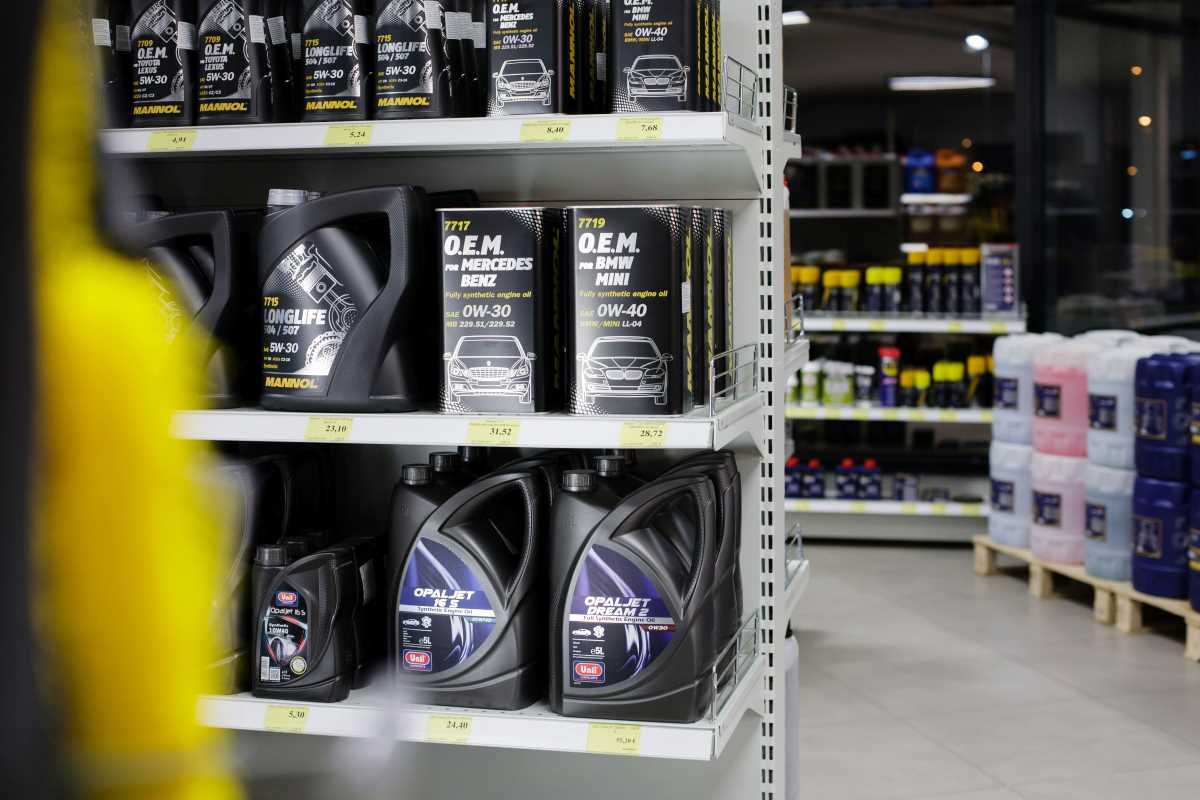If your car is the beating heart of your daily commute or road trip adventures, engine oil is its lifeblood. Choosing the wrong engine oil is like making your heart pump syrup, not an ideal situation. With so many options, terminology, and tiny numbers on the bottle, picking the right oil can feel overwhelming. Fear not! This guide will help you decode the mystery and choose the perfect oil for your ride.
Understand What Those Numbers and Letters Mean
First things first, you’ve probably noticed those cryptic combinations on oil bottles like 5W-30 or 10W-40. No, it’s not a secret passcode to get into a mechanic’s club. It’s a viscosity rating, and understanding it is crucial for picking the right oil.
The “W” stands for “winter,” and the number before it measures how the oil flows at low temperatures. Essentially, the lower the first number, the better the oil performs in cold weather. The second number represents the oil’s thickness at operating temperature. A higher number means a thicker oil, which can protect your engine better in high-heat situations.
Not sure which numbers you need? Consult your owner’s manual. Car manufacturers recommend specific oil viscosities based on your engine design, and it’s wise to follow their guidance. After all, no one knows your engine better than the folks who built it.
Match Your Oil to Your Driving Conditions
Your driving habits and environment play a big role in determining the best oil for your vehicle. Are you mostly navigating stop-and-go traffic, tackling off-road adventures, or cruising down highways for hours? Each scenario can benefit from a different oil formulation.
If you’re a city driver stuck in traffic more often than not, you probably need oil with extra detergents to combat sludge caused by short trips and frequent idling. On the other hand, if you’re driving long distances or towing heavy loads, a synthetic oil designed for high stress is usually your best bet.
Climate matters too. Living in a frigid area? Go for an oil with a low “W” rating for better cold starts. For drivers in hot, Sahara-like climates, a thicker oil that handles extreme heat better might be your engine’s best friend.
Synthetic, Conventional, or Blend?
Now that we’ve got viscosity down, it’s time to figure out which type of oil suits your vehicle. Oils generally fall into three main categories: synthetic, conventional, and synthetic blends. Think of them as the luxury, economy, and middle-tier options for your engine.
Synthetic oils are the high-end choice. They’re engineered for better performance, offering excellent protection against extreme temperatures, sludge, and wear. While they may cost more upfront, they tend to last longer and improve your engine’s efficiency, which can save you money in the long run.
Conventional oils are the old-school choice, often less expensive but requiring more frequent oil changes. They’re perfectly fine for older vehicles or drivers with straightforward needs.
Blends combine the best of both worlds, offering some of the perks of synthetic oils at a slightly lower price point. They’re a great option for drivers who want boosted performance but don’t want to splurge on full synthetic.
Look for Special Additives in Your Oil
Engine oils often come with additives designed to enhance performance or target specific needs. These tiny helpers can make a big difference in how your engine runs and ages, so keep an eye out for ones that suit your driving style.
Antioxidants help reduce oxidation, slowing down the degradation of oil over time. Detergents do the dirty work of keeping your engine clean by preventing deposit build-up. For cars with high mileage, look for oils that include conditioners to keep seals pliable and leaks at bay.
There are even oils designed with high-performance additives for turbocharged engines, which need extra cooling and lubrication under stress. Bottom line? If your car has special needs, chances are there’s an oil formulation tailored to match.
Stick to Manufacturer Recommendations
It’s tempting to go rogue and pick up the fanciest oil with the flashiest label, but sticking to your manufacturer’s recommendation is always a smart move. Those engineers didn’t just slap a suggestion in your owner’s manual for fun; they did it because that oil ensures optimal performance for your specific engine type.
Your manual will specify the ideal viscosity and whether you need synthetic or conventional oil. If you’ve misplaced the manual, a quick Google search or a chat with your dealership should get you back on track.
That said, there’s some wiggle room. For instance, if your car is older and starting to rack up the miles, switching to high-mileage oil could offer added benefits like conditioning seals and improving fuel efficiency. Just make sure the oil still meets standards for your make and model.
Common Misconceptions About Oil Changes
Before we wrap up, it’s worth busting a couple of myths that seem to persist in the car maintenance world. First up, the 3,000-mile rule. While it was once a golden standard, many modern vehicles can go 5,000 to 7,500 miles between oil changes with today’s advanced oils.
Another myth? Thinking all oils are the same. Skimping on quality or the wrong formulation can lead to faster wear and tear, lower fuel efficiency, and even engine failure. Your engine deserves better than a careless gamble.
Lastly, it’s easy to neglect oil checks. Even with the best oil in the world, engines can consume oil over time. Checking your levels regularly and topping up when needed ensures you’re never running on fumes.
What to Keep in Mind When Shopping
Shopping for engine oil might not sound as thrilling as shopping for new wheels or a sound system, but it holds just as much importance for your car’s health. Labels can feel overwhelming, so focus on the key indicators like viscosity, type (synthetic vs. conventional), and any specific certifications.
For instance, oils with an API (American Petroleum Institute) certification have been tested and approved for quality. Look out for ACEA or ILSAC ratings too, especially for European or Asian vehicles.
Here’s a quick checklist for choosing your oil:
- Check your owner’s manual for viscosity and specifications
- Consider your driving habits (city, highway, towing, off-road)
- Factor in your climate or seasonal changes
- Decide between synthetic, conventional, or blend
- Look for reputable certifications and recommended additives
The Long-Term Benefits of the Right Oil
Choosing the right engine oil feels like a small task, but its impact is anything but minor. It improves fuel economy, reduces wear on engine parts, keeps things running smoothly, and extends your engine’s life. If you’re looking at resale value down the line, a properly maintained vehicle is far more attractive to potential buyers.
Investing time and effort in understanding your engine oil needs is like investing in your car’s future. It’s a simple yet effective way to get more mileage—not just from your tank but from your vehicle as a whole.
Drive with Confidence
There you have it, a comprehensive guide to choosing the right engine oil without feeling baffled by the jargon or options. By knowing your engine, driving habits, and which oils fit the bill, you’re setting yourself up for a smoother, longer-lasting ride.
The next time you find yourself in the oil aisle, you won’t just pick the first bottle that catches your eye. You’ll choose wisely, confidently, and with the knowledge that your engine will thank you mile after mile.







